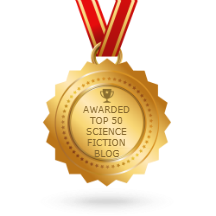Long ago, during a school visit to a top secret Government mathematics facility, I was bitten by a radioactive abacus: I quickly discovered I had gained an uncanny ability to count things. I was tempted initially to use my superhuman skills for personal gain, and very nearly became an investment banker. Instead under the cover of my alter-ego “The Plus One” I have employed my unique talent in the fight against crime for many years, and can even claim to have saved the Earth on five occasions. Or was it four?
Even with my phenomenal counting abilities I seem to lose track of the number of times the Superman concept has been “reinvented.” The novel Superpowers is just one of so many examples: films such as Unbreakable, Mystery Men, Push, Next, Jumper, Kick-Ass, Super, The Incredibles, and TV series such as Heroes or Misfits have already been there. Superheroes falling out of favour with the public, turning against the humans or against each other, with and without costumes, alter-egos and actual powers, with corporate sponsors, and with insanely powerful or eccentric powers – haven’t we all at some time fantasised about being able to hurl forks with deadly accuracy, or to make fish explode?
It doesn’t require any supersenses, though, to see that most of these “reinventions” are nothing of the sort. The Hulk never wore spandex! Batman never had any powers! Superman makes fish explode all the time! (allegedly) One theme that never seems to go away is the supervillain, and the cliché that the hero and villain complement each other.
Superpowers is therefore exceptional in that much of the story is about the absence of supervillainy. The All-Stars make a real but underwhelming impact on local crime statistics. They both assist and annoy the police, and the public become irritated and litiginous but fall short of baying for blood. Without a supervillain or doomsday plot they lose their way and lose their hero status – their powers also have their own limitations and divide the team more often than uniting it.
It turns out that the plot is smarter than this. There’s a twist coming – it was foreshadowed in the first line of every chapter but it still took me by surprise. Perhaps superheroes exist in our minds because supervillains do indeed exist in real life.















